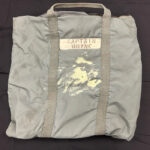The 1940s were a transformative decade, marked by global events that profoundly impacted every aspect of life, including fashion. Among the most recognizable and respected figures of this era were nurses, and their uniforms reflected both practicality and the evolving role of women in society. Recently, I had the opportunity to delve into this fascinating sartorial history by creating a replica of a 1940s student nurse uniform for Costume College, an annual event celebrating historical fashion and costuming. This project was not just about recreating a garment; it was a deeply personal tribute to my grandmother, a nurse whose career and dedication embody the spirit of that time.
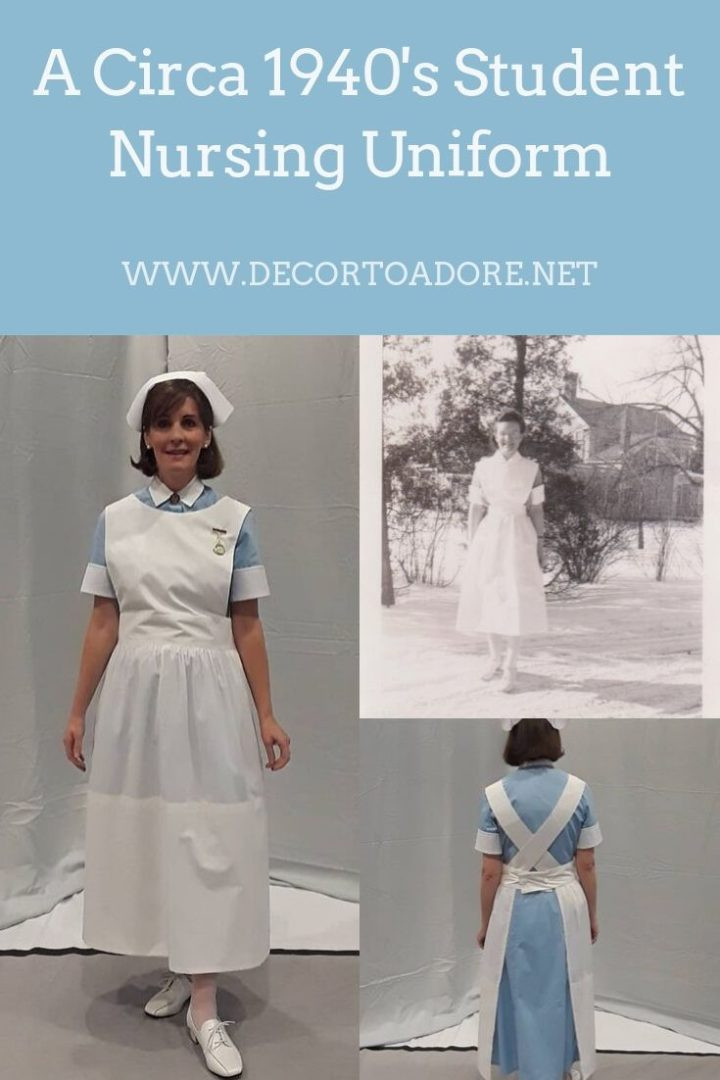 A Circa 1940
A Circa 1940
A Family Legacy in Nursing
My grandmother, affectionately known as Grandma Jingles, was a remarkable woman who instilled in me a love for vintage textiles and historical details. While many remember her for her charming doll hospital, her primary vocation was even more impactful: she was a registered nurse for over four decades, eventually rising to the position of head nurse. In an era where opportunities for women were often limited, she broke barriers. She was the first in her family to graduate high school, achieving valedictorian status and earning a nursing scholarship to St. John in Redwing, Minnesota. However, even with a scholarship, the financial realities of the time were stark. She had to work for an entire year to save the $39 needed to purchase her nursing uniforms – a sum that underscores the value and importance placed on these garments, even for student nurses.
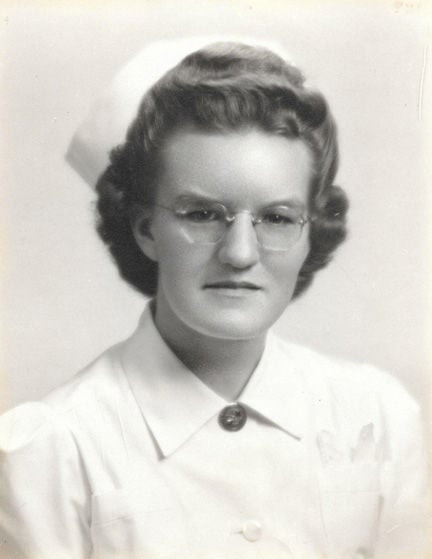 eleanor ingalls nurse
eleanor ingalls nurse
Unpacking the Details of a 1940s Nurse’s Dress
Driven by a desire to honor my grandmother’s legacy, I embarked on a journey to recreate her student nursing uniform. Though only a few photographs remained, her vivid descriptions provided invaluable insight. The standard student nurse uniform of the 1940s typically consisted of a medium blue dress paired with a crisp white apron. Functionality was key; the dress featured a button-front closure with white buttons, allowing for ease of wear and removal. Detachable white collars and cuffs, crafted from starched cotton poplin, were essential components. These detachable pieces were practical for hygiene, as they could be easily removed, laundered, and heavily starched. Nurses would even employ a clever trick to ensure their collars and cuffs were perfectly crisp: plastering them to mirrors to dry flat, eliminating the need for ironing. The nursing caps of the era were similarly treated, designed to be flattened and dried to maintain their iconic shape, often secured with back buttons to create the characteristic folded style.
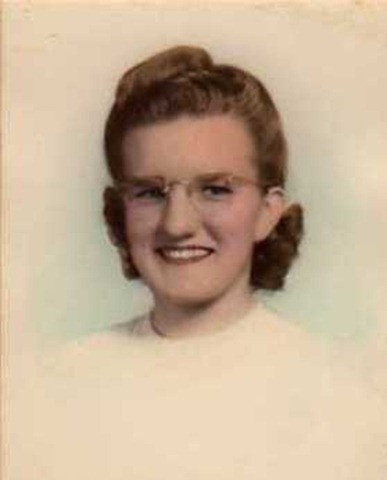 grandma jingles
grandma jingles
Beyond the outer layers, the undergarments of 1940s nurses also reflected the fashion norms of the time. While corsets were becoming less common, nurses often wore brassieres for support and new-fashioned girdles with garters to secure their essential white stockings. These stockings, ubiquitous in the 1940s, were characterized by their back seams, which required careful alignment for a polished and professional appearance.
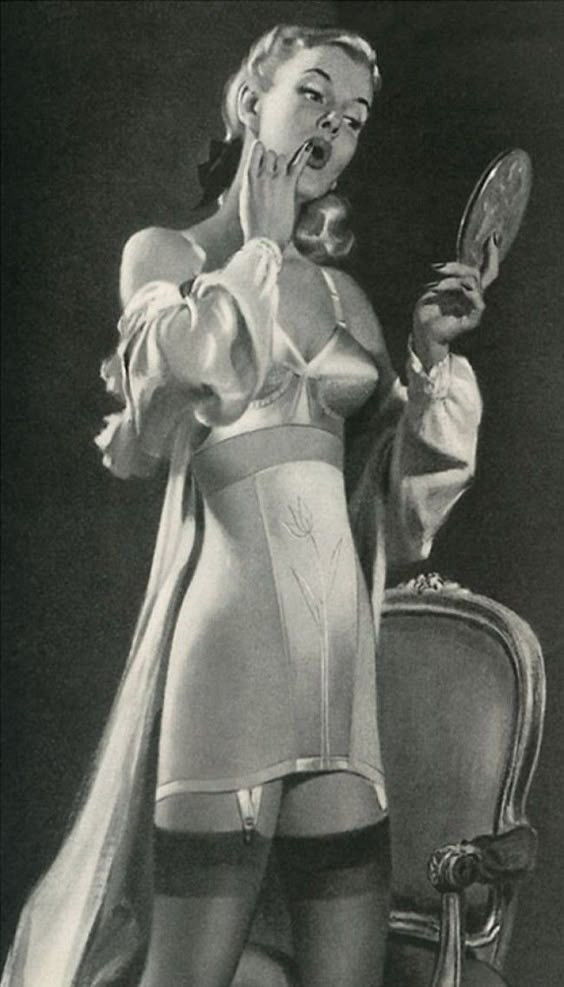 1940s Lingerie- Bra, Girdle, Slips, Underwear History
1940s Lingerie- Bra, Girdle, Slips, Underwear History
The Quest for Patterns and Authentic Design
Armed with a mental picture pieced together from photographs and family stories, I began the exciting process of recreating the 1940s student nurse uniform. Sourcing the correct medium blue fabric and white buttons proved relatively straightforward. Recognizing that elements like the nurse’s cap, collar, and cuffs were likely purchased rather than homemade in the period, I turned to online marketplaces like eBay and Etsy. I successfully located a vintage nurse cap, but period-accurate collars and cuffs proved more elusive.
This led me to the world of vintage sewing patterns. My search focused on a 1940s dress pattern featuring a button-down front, collar, and short sleeves with cuffs. After extensive research, I discovered Simplicity 2184, a pattern actually dating slightly later to the 1950s, but remarkably close in style to the 1940s aesthetic I needed. While categorized as an intermediate-level pattern, primarily due to the collar construction, the instructions were clear and manageable, even when adapted to create contrasting white collar and cuffs.
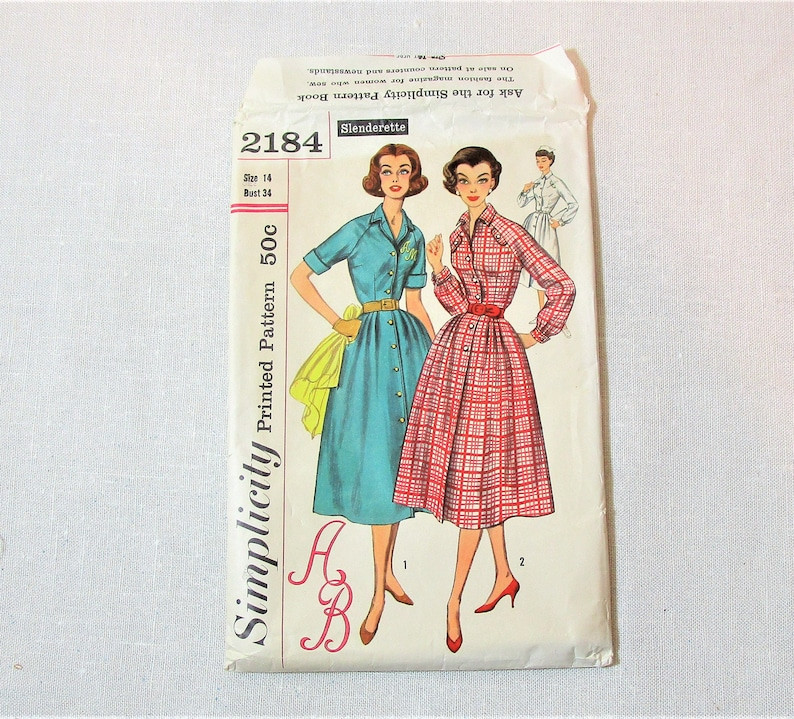 simplicity 2184
simplicity 2184
The apron presented a different set of challenges. Photographs revealed wide straps that crisscrossed at the back and buttoned onto the waistband. My grandmother, petite in stature, further informed the visual details of the apron’s fit. Butterick B5726, view B, emerged as the closest pattern available. While the front apron shape was suitable, the skirt needed lengthening to match the 1940s style. Crucially, the back ties needed significant modification. Instead of simple tie-on straps, I drafted wider ties designed to crisscross and button to the waistband, mirroring the historical examples. This pattern adjustment required more advanced sewing and pattern drafting skills, thankfully, a skilled friend helped to ensure the accuracy of these modifications.
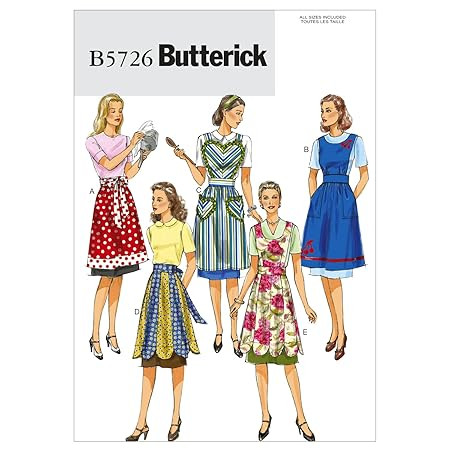 Butterick B5726
Butterick B5726
Accessorizing the 1940s Nurse Look
Completing the 1940 Nurse Uniform involved careful attention to accessories. A treasured family heirloom, my grandmother’s original nursing school graduation pin, became a central piece. This pin, visible in vintage photographs, added an irreplaceable element of authenticity and personal connection.
 A Circa 1940
A Circa 1940
For footwear, I sourced white stockings and square-heeled oxfords from eBay, classic and practical shoe styles typical of 1940s nurse uniforms.
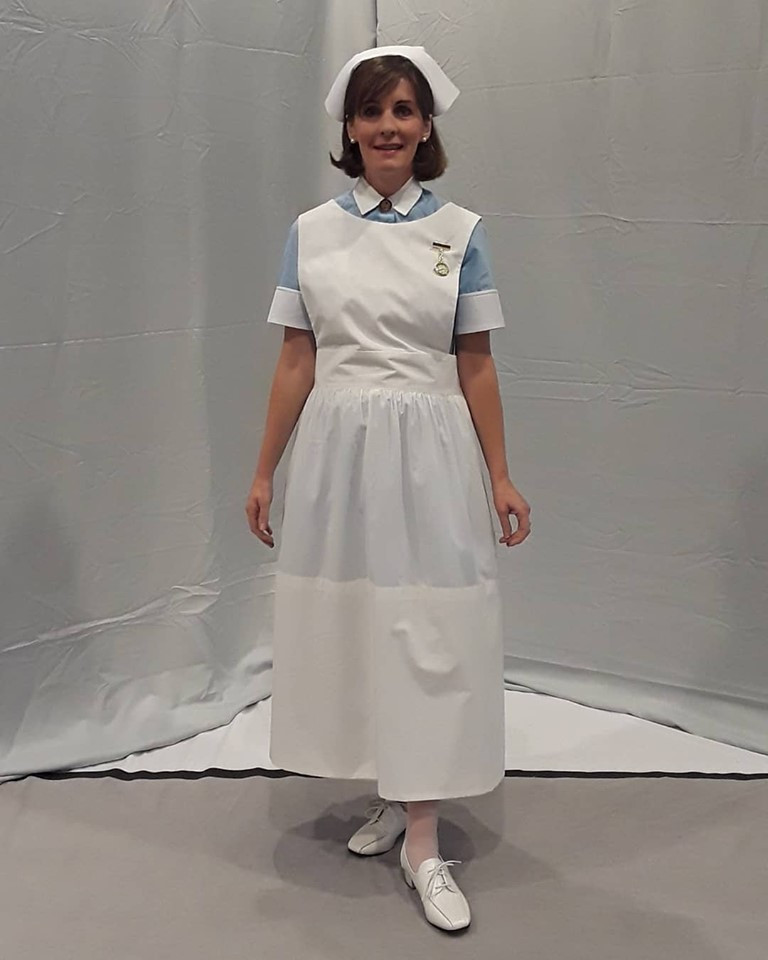 A Circa 1940
A Circa 1940
A Heartfelt Homage at Costume College
Wearing the completed 1940 nurse uniform at Costume College was a rewarding experience. Among the many elaborate costumes, this simple yet meaningful creation resonated deeply with attendees. The uniform evoked smiles and sparked conversations, proving the enduring power of historical garments to connect with people.
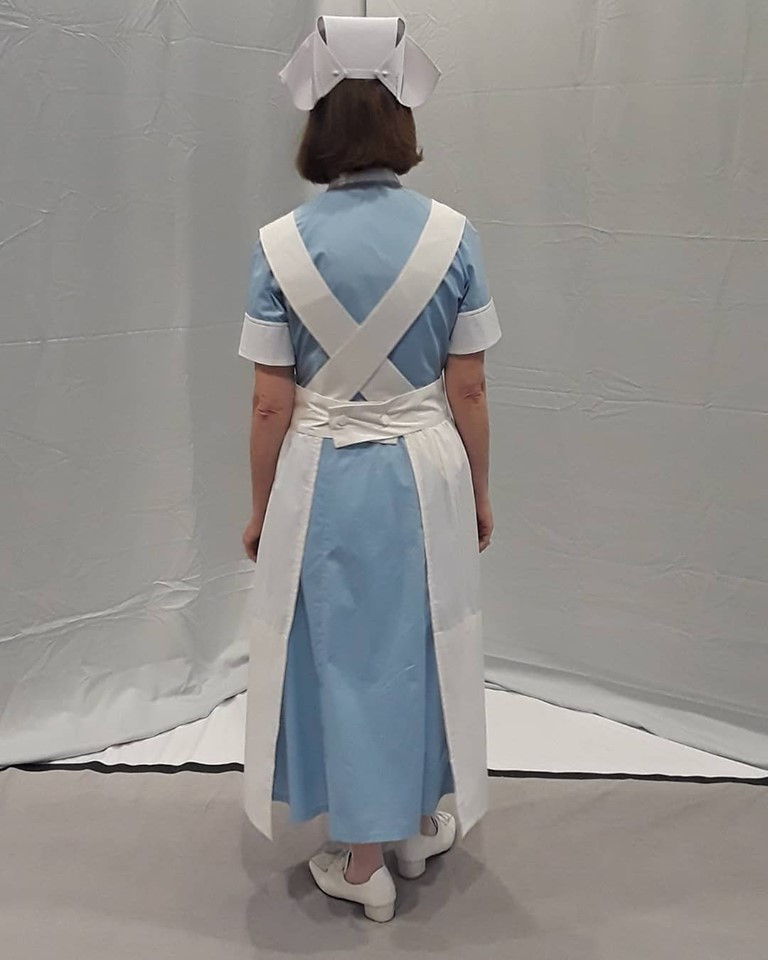 A Circa 1940
A Circa 1940
An unexpected highlight was meeting another attendee dressed in a WWI-era nurse uniform. This chance encounter led to a delightful conversation and a surprising connection: the WWI nurse was Constance MacKenzie, a renowned British costume maker known for her work on films like Wonder Woman and Mary Poppins Returns. Meeting such a talented and gracious individual further enriched the experience.
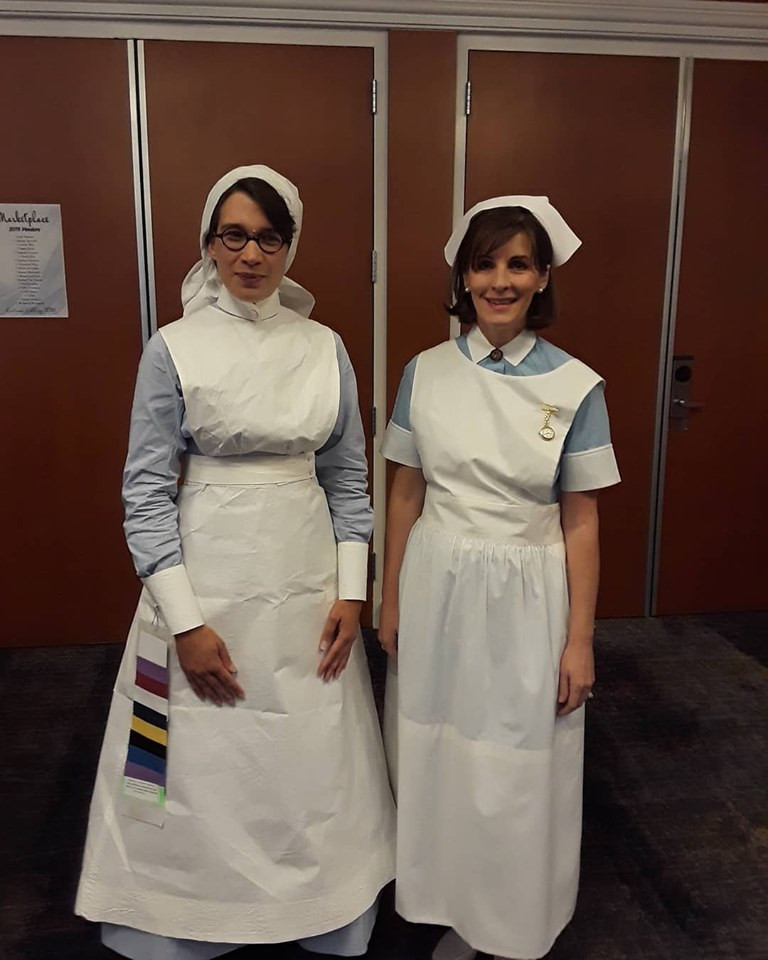 A Circa 1940
A Circa 1940
Of all the costumes I have created, this 1940 nurse uniform holds a special place in my heart. It is more than just fabric and patterns; it is a tangible link to my grandmother’s dedicated service and a tribute to the nurses of the 1940s who played such a vital role during a pivotal time in history. I believe Grandma Jingles would have been proud.
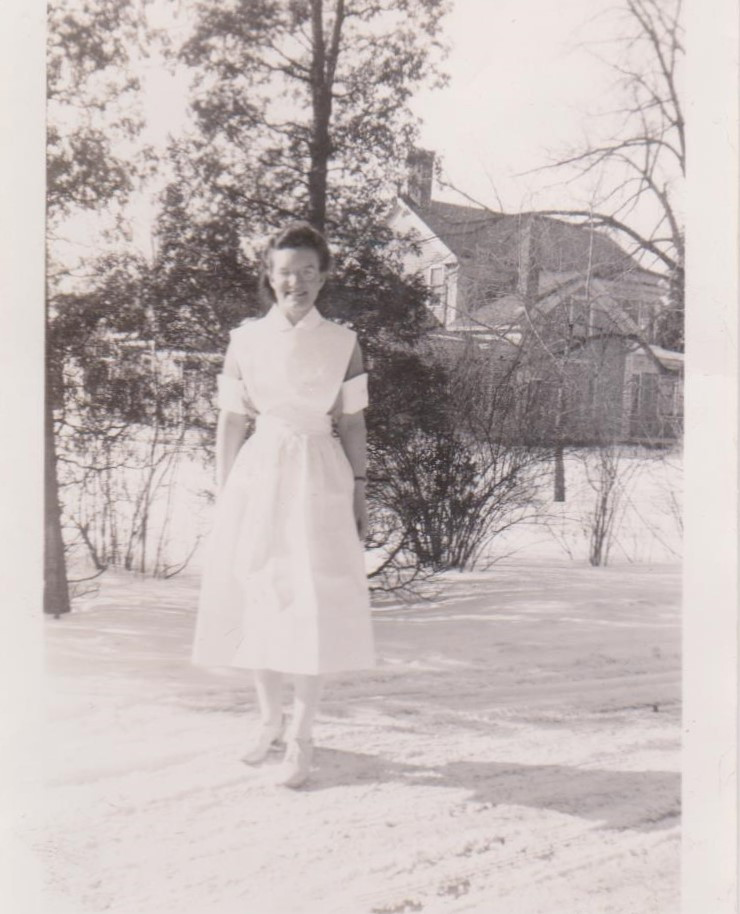 A Circa 1940
A Circa 1940
Reflecting on this project, it underscores the power of clothing to tell stories and connect us to the past. The 1940 nurse uniform is not just a historical garment; it represents a legacy of care, resilience, and dedication.

